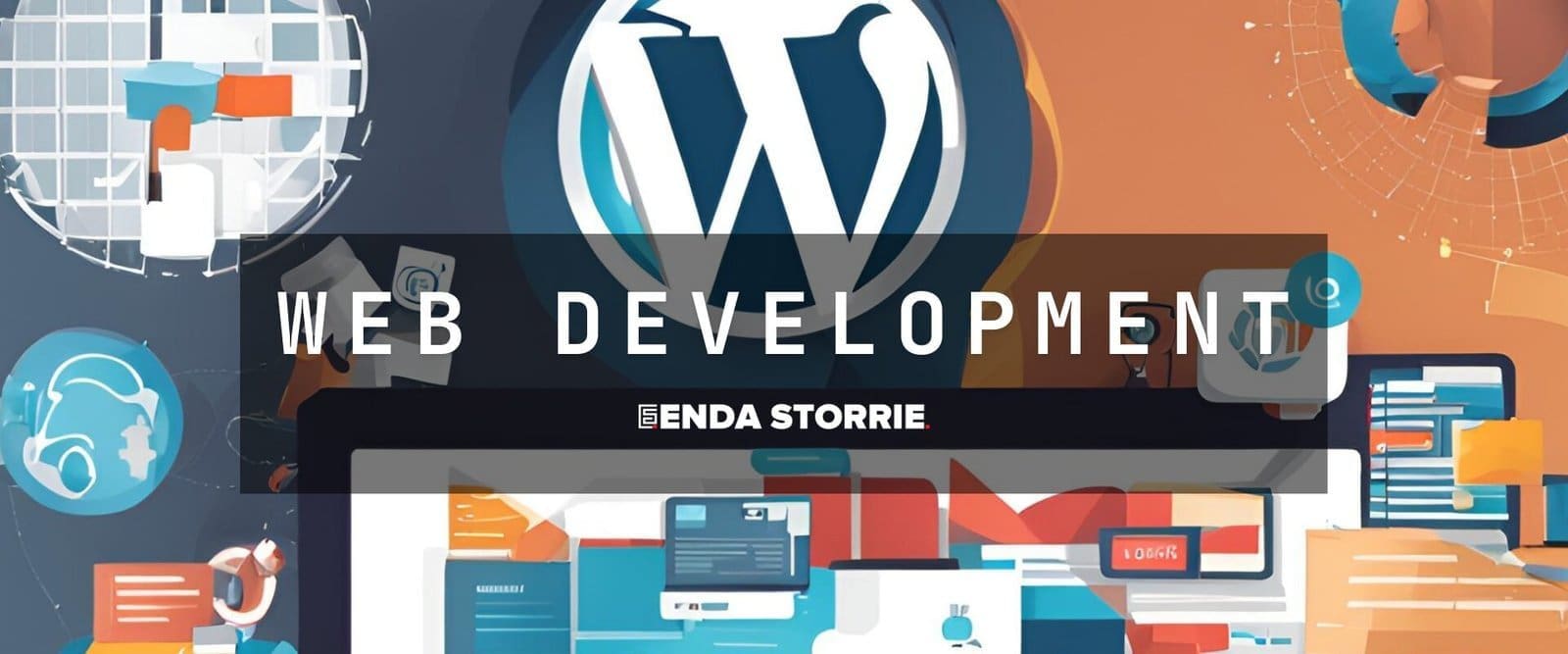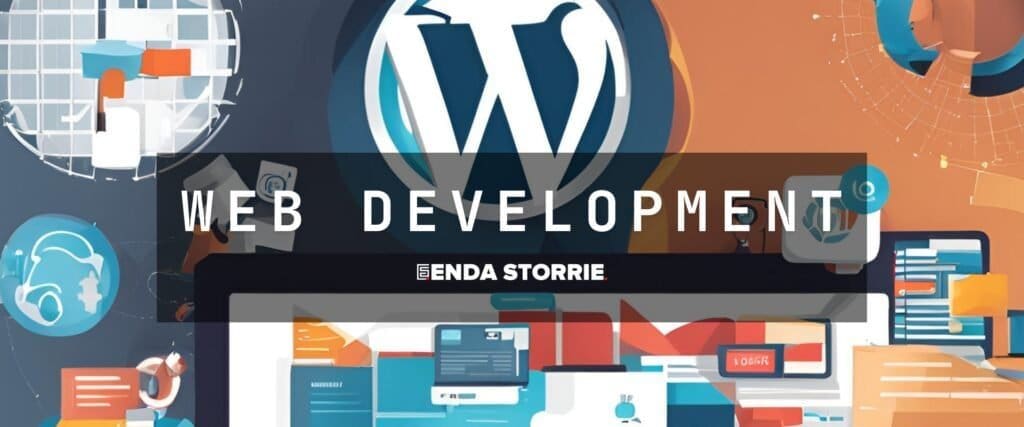Building a website can be daunting for beginners. In this article, I break it down step-by-step so it isn't as frightening.
When creating a website, selecting an appropriate domain name and hosting service is a crucial initial step. The domain name serves as the website's internet address and should be memorable, relevant to the brand, and indicative of the site's purpose. Effective domain names are typically short, simple, and easy to spell.
It is advisable to avoid hyphens and numbers, as these can complicate recall. Incorporating relevant keywords can aid in search engine optimization (SEO). After securing a domain name, choosing a hosting provider is the next important decision.
Hosting services make websites accessible on the internet. Key factors to consider when selecting a hosting provider include reliability, speed, security, and customer support. The chosen hosting plan should align with the website's requirements, whether it's a small personal blog or a large e-commerce platform.
Desirable features in a hosting service include 24/7 support, automatic backups, and SSL certificates for enhanced security. The domain name and hosting choice significantly impact a website's success. The domain name creates the first impression for visitors, making it essential to select one that reflects brand identity, relates to the website's niche, and is easily remembered. Beginners beware - make sure you search the market for the best deals and best reviews.
A dependable hosting provider ensures consistent website accessibility and security. Important hosting features include round-the-clock support, fast loading times, and regular backups to safeguard against potential issues. Careful consideration of these elements establishes a strong foundation for a website's success.
Key Takeaways for Beginners
- Choose a domain name that is easy to remember, relevant to your brand, and has a .com extension for better credibility. Select a reliable hosting provider with good uptime and customer support.
- Install WordPress, a popular and user-friendly content management system that is perfect for beginners. Choose a responsive and visually appealing theme that aligns with your brand and content.
- Customize your website with plugins for added functionality and widgets for easy navigation and user engagement. Ensure a seamless user experience and easy access to important information.
- Create engaging and SEO-friendly content by using relevant keywords, high-quality images, and compelling headlines. Focus on providing value to your audience and optimizing for search engines. This will take a bit of research and work for beginners.
- Optimize your website for speed and performance by using caching plugins, optimizing images, and choosing a reliable hosting plan. A fast website improves user experience and search engine rankings.
- Implement security measures such as SSL certificates, regular backups, and strong passwords to protect your website from cyber threats and ensure data safety.
- Launch your website after thorough testing and continue to maintain it by updating content, monitoring performance, and staying updated with the latest trends and technologies for long-term success.
- Again, this may seem daunting, but beginners can research all of these online and learn as they go along - just as experts do.
Installing WordPress and Choosing a Theme
Once you have chosen a domain name and hosting provider, the next step is to install a content management system (CMS) such as WordPress. WordPress is one of the most popular CMS platforms due to its user-friendly interface, flexibility, and extensive range of themes and plugins. It is a perfect CMS for beginners. Most hosting providers offer a simple one-click installation process for WordPress, making it easy to get started.
Once WordPress is installed, you can choose a theme that suits the look and feel of your website. There are thousands of free and premium themes available, so take the time to browse through different options and select one that aligns with your brand and content. When choosing a theme for your website, consider factors such as responsiveness, customization options, and compatibility with plugins.
A responsive theme is essential for ensuring that your website looks good on all devices, including desktops, tablets, and smartphones. Additionally, look for themes that offer plenty of customization options so you can personalize the design to fit your brand. It's also important to choose a theme that is compatible with popular plugins that you may want to use in the future.
By carefully selecting a theme that meets these criteria, beginners can create a visually appealing and functional website that engages your audience. Installing WordPress and choosing a theme are important steps in setting up your website. WordPress provides an intuitive platform for managing your content and customizing your website's design.
When selecting a theme, consider factors such as responsiveness, customization options, and plugin compatibility to ensure that your website looks great and functions well across all devices. Take the time to explore different themes and find one that aligns with your brand identity and content. By choosing the right theme, you can create a visually appealing and user-friendly website that captures the attention of your audience.
Customizing Your Website with Plugins and Widgets
After installing WordPress and choosing a theme, the next step is to customize your website with plugins and widgets. Plugins are add-on software that extend the functionality of your website, allowing you to add features such as contact forms, social media integration, e-commerce capabilities, and more. This makes the job even easier for beginners. There are thousands of free and premium plugins available for WordPress, so take the time to research and select ones that are relevant to your website's goals.
Additionally, widgets are small blocks that perform specific functions on your website, such as displaying recent posts, social media feeds, or a search bar. By adding plugins and widgets, you can enhance the user experience and functionality of your website. When customizing your website with plugins and widgets, it's important to consider factors such as performance, security, and user experience.
While plugins can add valuable features to your website, it's important not to overload it with unnecessary plugins that can slow down your site or pose security risks. Choose plugins that are well-maintained, regularly updated, and have positive reviews from other users. Additionally, consider how widgets can improve the navigation and engagement on your website.
By carefully selecting and adding plugins and widgets that enhance the functionality of your website without compromising performance or security, you can create an engaging and user-friendly experience for your visitors. Customizing your website with plugins and widgets is an important step in creating a functional and engaging online presence. Plugins allow you to add valuable features to your website, such as contact forms, social media integration, e-commerce capabilities, and more.
When selecting plugins, consider factors such as performance, security, and user experience to ensure that they enhance rather than hinder your website. Additionally, widgets can improve navigation and engagement on your site by providing useful information in a visually appealing way. By carefully customizing your website with plugins and widgets, you can create a seamless user experience that keeps visitors coming back for more.
Creating Engaging and SEO-Friendly Content
Once you have customized the functionality of your website, it's time to focus on creating engaging and SEO-friendly content. Content is king when it comes to attracting and retaining visitors to your website. Whether it's blog posts, articles, videos, or infographics, high-quality content that provides value to your audience is essential for building a loyal following. Beginners can learn this as they go along and create great content.
When creating content for your website, consider factors such as relevance to your niche, readability, visual appeal, and search engine optimization (SEO). By producing content that resonates with your target audience and is optimized for search engines, you can increase visibility and attract organic traffic to your site. When creating content for your website, it's important to conduct keyword research to identify topics that are relevant to your niche and have high search volume.
Incorporate these keywords naturally into your content to improve its visibility in search engine results. Additionally, focus on creating content that is informative, engaging, and visually appealing to capture the attention of your audience. Use a mix of text, images, videos, and other multimedia elements to make your content more engaging and shareable.
By consistently producing high-quality content that is optimized for search engines, you can establish yourself as an authority in your niche and attract a steady stream of organic traffic to your website. Creating engaging and SEO-friendly content is essential for attracting and retaining visitors to your website. High-quality content that provides value to your audience can help build a loyal following and increase visibility in search engine results.
When creating content for your website, conduct keyword research to identify relevant topics with high search volume and incorporate these keywords naturally into your content. Additionally, focus on producing informative and visually appealing content that resonates with your target audience. By consistently creating engaging content that is optimized for search engines, you can establish yourself as an authority in your niche and attract organic traffic to your site.
Optimizing Your Website for Speed and Performance
In addition to creating engaging content, it's important to optimize your website for speed and performance. A fast-loading website not only provides a better user experience but also has a positive impact on search engine rankings. There are several ways to improve the speed and performance of your website, such as optimizing images, minifying CSS and JavaScript files, leveraging browser caching, using a content delivery network (CDN), and choosing a reliable hosting provider with fast servers.
By implementing these strategies, you can ensure that your website loads quickly and efficiently for visitors. When optimizing your website for speed and performance, it's important to regularly monitor its performance using tools such as Google PageSpeed Insights or GTmetrix. These tools provide insights into areas where your website can be improved in terms of speed and performance.
Additionally, consider implementing lazy loading for images and videos to prioritize the loading of above-the-fold content first. By continuously monitoring and optimizing the speed and performance of your website, you can provide visitors with a seamless browsing experience while also improving its visibility in search engine results. Optimizing your website for speed and performance is crucial for providing visitors with a seamless browsing experience while also improving its visibility in search engine results.
A fast-loading website not only enhances user experience but also has a positive impact on search engine rankings. Implement strategies such as optimizing images, minifying CSS and JavaScript files, leveraging browser caching, using a CDN, and choosing a reliable hosting provider with fast servers to improve the speed and performance of your site. Additionally, regularly monitor its performance using tools such as Google PageSpeed Insights or GTmetrix to identify areas for improvement.
By continuously optimizing the speed and performance of your website, you can ensure that visitors have a positive experience while also boosting its visibility in search engine results.
Implementing Security Measures to Protect Your Website
Another important aspect of maintaining a successful website that beginners must learn is implementing security measures to protect it from potential threats such as hacking attempts, malware infections, or data breaches. Security should be a top priority when it comes to managing a website, especially if it collects sensitive information from visitors or processes online transactions. There are several security measures you can implement to protect your website, such as using SSL certificates to encrypt data transmission, regularly updating WordPress core files and plugins to patch security vulnerabilities, using strong passwords for user accounts, implementing two-factor authentication (2FA), and using security plugins to monitor and protect against potential threats.
In addition to these measures, it's important to regularly back up your website's data in case of an unforeseen security incident or technical failure. Many hosting providers offer automatic backup services as part of their hosting plans, but it's also recommended to use additional backup solutions such as cloud storage or backup plugins for added redundancy. By implementing these security measures and regularly backing up your website's data, you can minimize the risk of security breaches or data loss while providing visitors with peace of mind when browsing or interacting with your site.
Implementing security measures is essential for protecting your website from potential threats such as hacking attempts or malware infections. Security should be a top priority when managing a website that collects sensitive information or processes online transactions. Use SSL certificates to encrypt data transmission, regularly update WordPress core files and plugins to patch security vulnerabilities, use strong passwords for user accounts, implement 2FA, and use security plugins to monitor potential threats.
Additionally, regularly back up your website's data using automatic backup services provided by hosting providers or additional backup solutions such as cloud storage or backup plugins for added redundancy. By implementing these security measures and regularly backing up your website's data, you can protect it from potential threats while providing visitors with peace of mind when browsing or interacting with your site.
Launching Your Website and Maintaining it for Success
After customizing the functionality and design of your website while ensuring its security and performance are optimized; it's time to launch it into the digital world! Once launched; it's important not only maintain but also continuously improve upon its design; functionality; security; performance; content; SEO; engagement; etc., in order for it remain successful. Launching a website into the digital world is an exciting milestone; but maintaining its success requires ongoing effort; dedication; monitoring; analysis; updates; etc., in order for it remain relevant; secure; fast; engaging; visible; etc., in an ever-evolving digital landscape.
In conclusion; launching a successful website requires careful planning; attention-to-detail; ongoing maintenance; continuous improvement; etc., in order for it remain relevant; secure; fast; engaging; visible; etc., in an ever-evolving digital landscape.
For more tips and insights on WordPress websites, visit this article >>>
Check out one of my other WordPress websites, Story Bible.
FAQs
What is WordPress?
WordPress is a popular content management system (CMS) that allows users to create and manage websites easily. It is open-source and offers a wide range of themes, plugins, and customization options.
Why should I use WordPress for building a website?
WordPress is user-friendly, flexible, and offers a wide range of features and customization options. It is also SEO-friendly and has a large community for support and resources.
What are the steps to build a WordPress website for beginners?
The steps to build a WordPress website for beginners include choosing a domain name and hosting, installing WordPress, selecting a theme, customizing the website, adding content, and optimizing for SEO.
Do I need coding knowledge to build a WordPress website?
No, you do not need coding knowledge to build a WordPress website. WordPress offers a user-friendly interface and many themes and plugins that allow for customization without coding.
What are some essential plugins for a WordPress website?
Some essential plugins for a WordPress website include Yoast SEO for search engine optimization, WooCommerce for e-commerce functionality, and WPForms for creating contact forms.
How can I make my WordPress website stunning?
To make your WordPress website stunning, you can choose a visually appealing theme, use high-quality images and graphics, optimize for mobile devices, and ensure fast loading times. Additionally, you can use plugins for added functionality and design elements.





